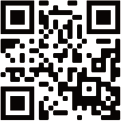Lessons to Share

I am honored to write a farewell column for Seaports Magazine, which is well-timed to coincide with my June 2 retirement as executive director of the Duluth Seaway Port Authority. It’s difficult to retire from a job like this. First, it’s just hard to say goodbye to a fulfilling job, an exceptional team, and valued partners. It’s also difficult to retire because the excitement and momentum of the job continues until the wheels stop spinning.
Looking back, I am proudest of my team’s culture and the work we completed. Together, we developed a mission and strategic objectives that defined and drove our work. We executed an ambitious program of capital investment projects, with an overarching goal of increasing operational efficiency and capacity for providing a range of flexible supply chain solutions for our customers. This included expanding warehouse capacity, building U.S. Customs and Border Protection container examination facilities, dockwall rehabilitation, and modernizing on-dock rail infrastructure. We’ve also built out lease properties to support important job-center tenants. We purchased and renovated an historic school building to create a beautiful new office for the Port Authority adjacent to our terminal. We strengthened our brand and the port brand within our community, region, and state.
And we will be at it all the way to June 2 — and beyond: refreshing our strategic plan; working with our partners to navigate the challenges and opportunities presented by rapidly deployed federal policies; pursuing federal funds for specific projects and lobbying for state grant program funds. It’s hard to pack away this job while still participating!
Looking back on my time at the helm, I have three lessons to leave to my successor and port partners:
1. Foremost, an executive director directs a staff and reports to a board. Both of these sets of relationships require deliberate nurturing. Regarding staff, they are the Port Authority. It is imperative to provide clear strategic direction and ensure staff have the resources they need to get their work done. Building a supportive, problem-solving, mission-centered culture is key to thriving, both as a team and as individuals.
2. Very few things in life develop in a linear fashion. Evolutionary change is not a linear progression toward a single endpoint, and neither is any form of port authority work. This is true for affecting cultural change, developing new trade lanes, transforming a terminal to provide a wider array of services, getting a CBP facility approved and built, influencing the development of reasonable environmental policies, lobbying for a new funding program, even applying for a federal grant.
This is especially true when multiple staff and/or multiple partners are involved. It’s going to get messy, but you learn to enjoy the ride. In short: Hone your sequential problem-solving skills, understand the nuance of sequence, be vigilant for the opportune moment when action is imperative to success, but know when to accept a period of stasis. Never worry about who gets the credit. Know that not all outcomes can be controlled. Master the art of “good enough.” It’s a bit like raising kids.
3. Not only do you need partners to get stuff done, partners add depth and resilience to solutions and spice to the journey. We need partners at the local, state, and federal levels to leverage our resources and talents. Perhaps it’s obvious, but you need to nourish those partnerships long before they are critical to an outcome.
AAPA has been an important partner and an asset throughout my Port Authority tenure. When I was a new director of government and environmental affairs, fellow AAPA members eagerly shared their experience and knowledge, and I drank deeply from that well.
This continued when I became executive director and crescendoed when I became an AAPA board member. The organization has undergone dramatic change in 10 years, with two phases of leadership evolution. I’ve watched recent leaders face and resolve challenges, displaying grace under pressure. Best of all, I’ve held a front-row seat as our trade association developed into a government affairs machine with far-reaching influence and maximal effectiveness.
Thank you, Cary Davis and the whole AAPA team, for your friendship, fellowship and advocacy through the years. I know you well enough to know you’ll never rest on your laurels, and that all of the nation’s port regions will be supported and tenaciously represented when and where it matters.




